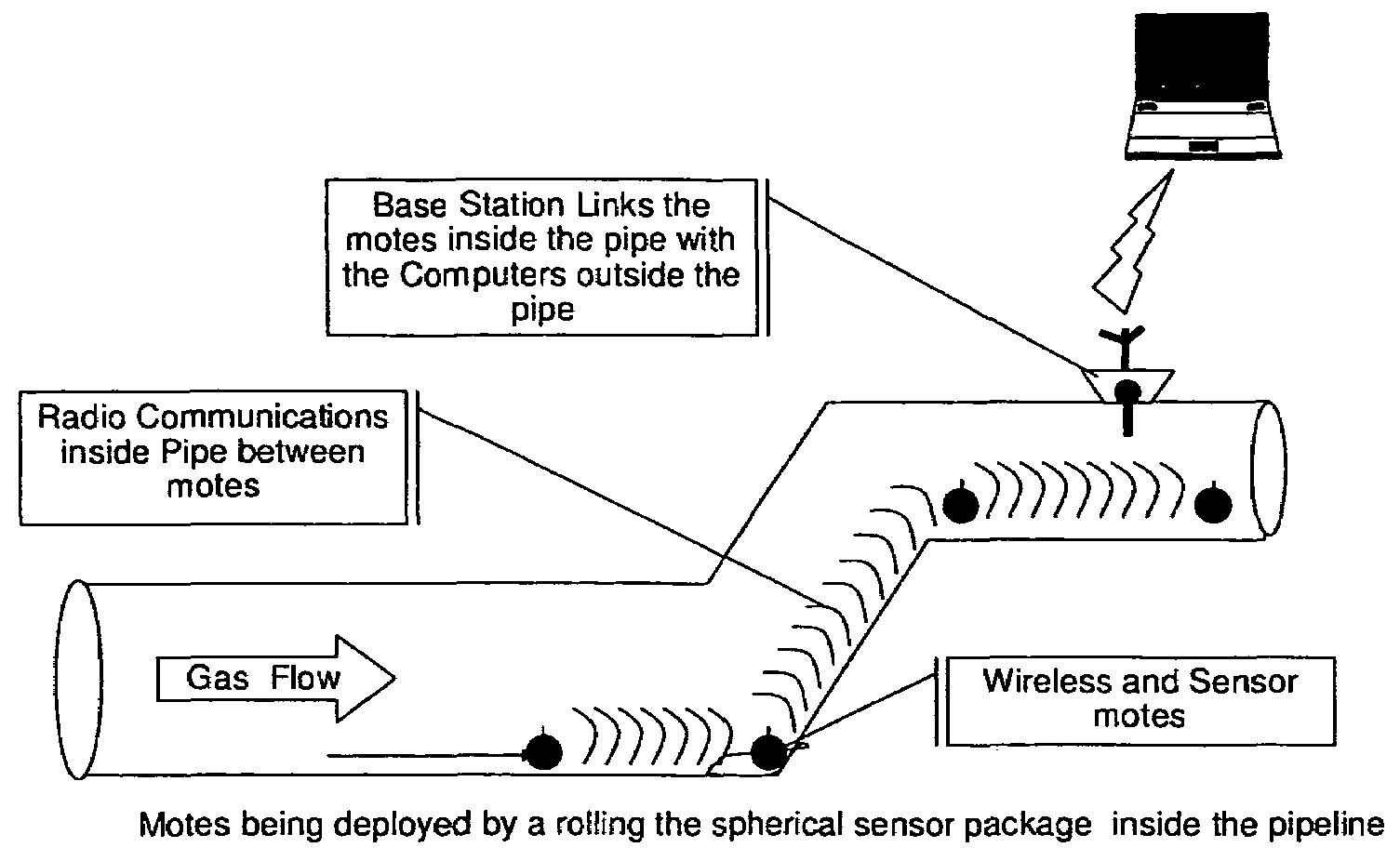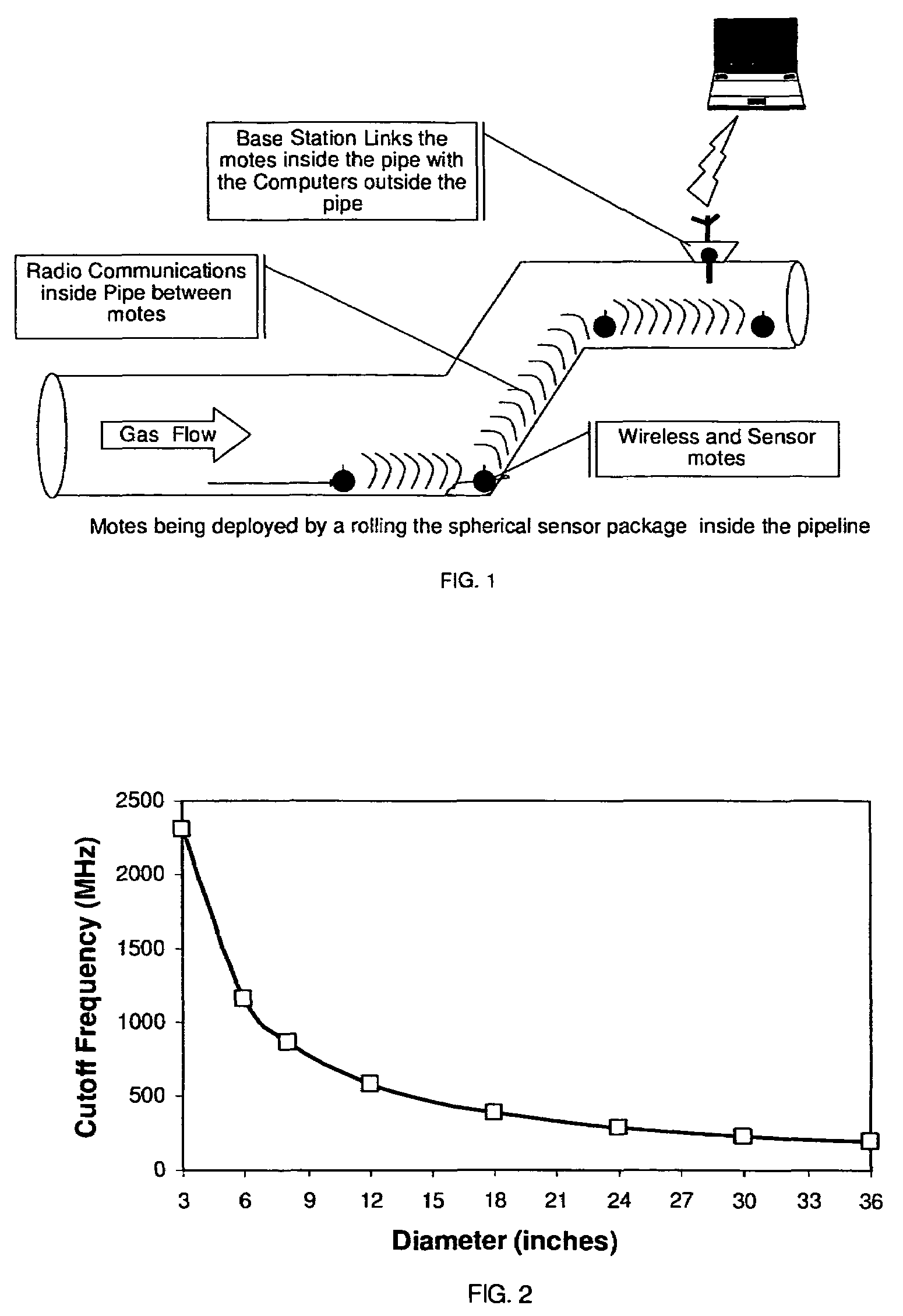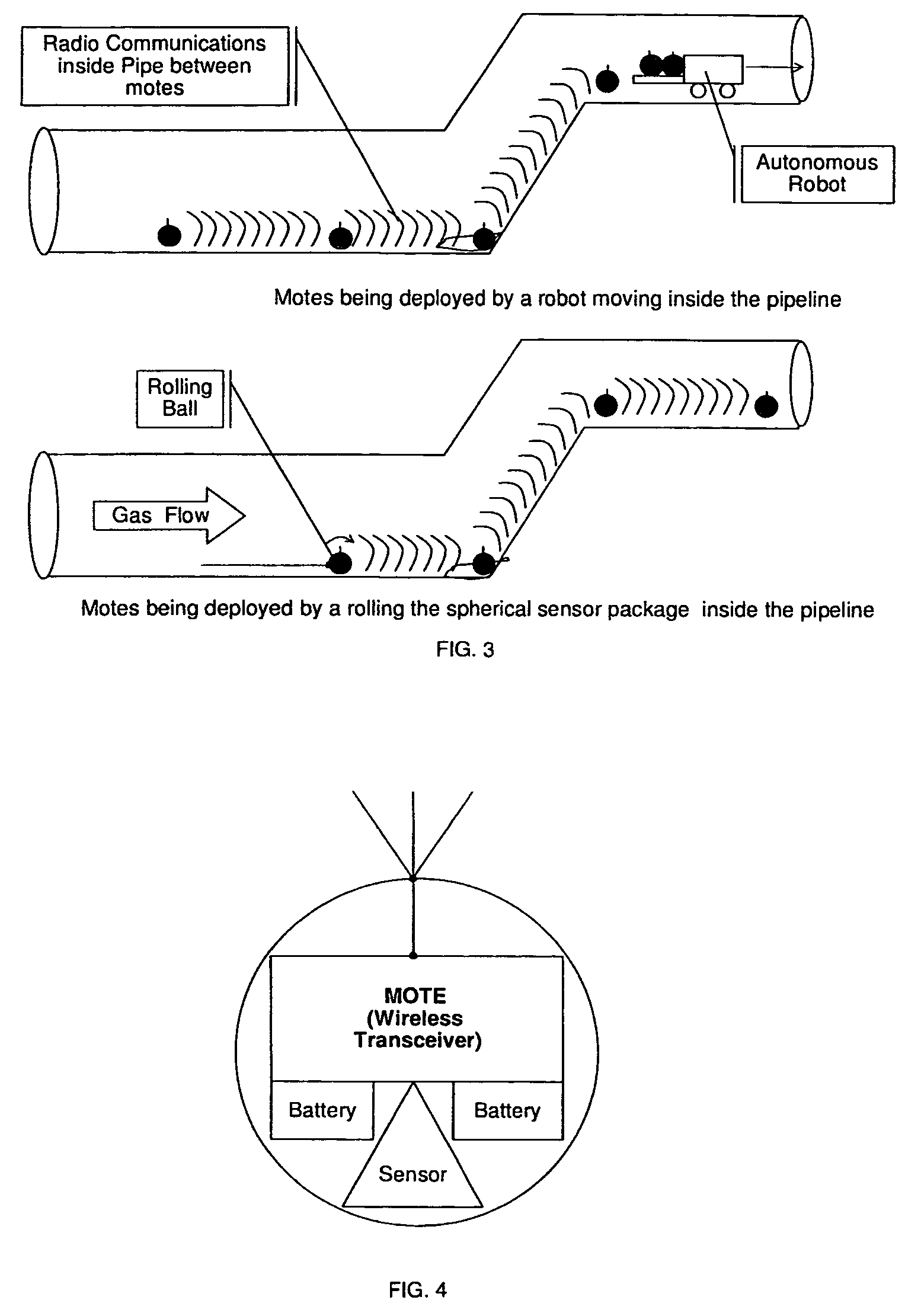Remote monitoring of pipelines using wireless sensor network
a wireless sensor and remote monitoring technology, applied in the direction of hydrodynamic testing, fluid tightness measurement, instruments, etc., can solve the problems of unanticipated failure, high cost, and current use of considerable expense and effort in the energy and chemical processing sectors, and achieve low cost, low cost, and low cost
- Summary
- Abstract
- Description
- Claims
- Application Information
AI Technical Summary
Benefits of technology
Problems solved by technology
Method used
Image
Examples
Embodiment Construction
[0016]While the present invention will be described more fully it is to be understood at the outset of the description which follows that persons of skill in the appropriate arts may modify the invention herein described while still achieving the favorable results of this invention. Accordingly, the description which follows is to be understood as being a broad, teaching disclosure directed to persons of skill in the appropriate arts, and not as limiting upon the present invention.
[0017]First briefly in overview, the present invention involves the establishing of a sensor network in existing gas pipelines (both transmission and distribution) and new pipelines, then collecting the sensor data from multiple sites for input into a recommendation engine that provides maintenance alerts for repair of the pipeline. The system may be more easily understood by its use in gas pipelines with the understanding that the foregoing is also broadly applicable in other domains. There are some 800,0...
PUM
| Property | Measurement | Unit |
|---|---|---|
| frequencies | aaaaa | aaaaa |
| frequency | aaaaa | aaaaa |
| frequency | aaaaa | aaaaa |
Abstract
Description
Claims
Application Information
 Login to View More
Login to View More - R&D
- Intellectual Property
- Life Sciences
- Materials
- Tech Scout
- Unparalleled Data Quality
- Higher Quality Content
- 60% Fewer Hallucinations
Browse by: Latest US Patents, China's latest patents, Technical Efficacy Thesaurus, Application Domain, Technology Topic, Popular Technical Reports.
© 2025 PatSnap. All rights reserved.Legal|Privacy policy|Modern Slavery Act Transparency Statement|Sitemap|About US| Contact US: help@patsnap.com



